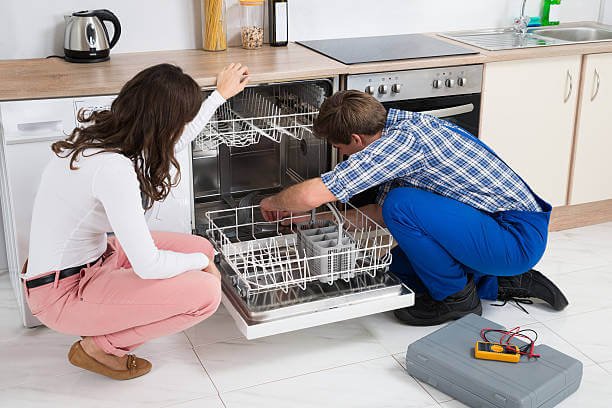8 Common Causes for Dishwasher Drying Issues and Their Solutions

Dishwashers are meant to simplify your routine, yet it can be exasperating when they fall short, leaving your dishes clean but damp. When your dishwasher fails to dry effectively, diagnosing the problem is critical. Explore the top eight culprits behind poor drying performance and discover practical solutions to rectify the issue.
Primary Causes of Dishwasher Drying Failures
Incorrect Loading Technique
Improper dishwasher loading can obstruct the spray arms, hindering effective rinsing. This leads to water pooling in some regions of the load. Additionally, placing dishes too closely together restricts airflow, impeding the evaporation of water by hot air, resulting in wet dishes post-cycle.
To load dishes correctly:
Arrange more oversized items on the bottom rack, such as pots and pans, ensuring they do not obstruct the spray arms.
Position plates and bowls facing inward and tilted slightly for optimal water circulation.
Utilize the top rack for cups, glasses, and smaller items, spacing them apart adequately and refraining from overstacking.
Rinse Aid Concerns
Rinse aid plays a crucial role in facilitating the efficient drying of dishes by reducing water’s surface tension. Without it, water droplets cling to dishes, resulting in spotting and prolonged drying times, which is particularly problematic for plastic items, which dry more slowly.
If you suspect your dishwasher requires more rinse aid to enhance its performance, consider adjusting the dispenser settings. Most dishwashers offer adjustable settings for the amount of rinse aid dispensed per cycle, which may need to be increased, especially in areas with hard water.
For optimal outcomes, opt for a high-quality rinse aid and regularly inspect the dispenser for any clogs or damage.
Heating Element Dysfunction
The heating element is responsible for elevating the internal temperature of the dishwasher during the drying cycle, facilitating the evaporation of water from your dishes. When it fails to function correctly, your dishes will remain wet post-cycle.
Inspect the heating element for any visible signs of damage. If none are apparent, it’s advisable to seek assistance from a professional dishwasher repair service. A local technician can assess the heating element’s condition and determine if replacement is necessary.
Incorrect Cycle Selection
Selecting the proper dishwasher cycle can lead to effective drying. Each cycle is tailored with specific functions and temperatures. For instance, eco-friendly or quick-wash cycles prioritize energy and water conservation, often resulting in lower temperatures and abbreviated drying times. Consequently, dishes may not achieve optimal dryness, and some cycles may even omit the drying phase altogether.
This issue is quickly resolved by opting for a cycle incorporating a dedicated drying phase and operating at higher temperatures. Consult your dishwasher’s manual for detailed descriptions of cycle types, but generally, cycles labeled “Heavy Duty,” “Normal,” or featuring a “Heated Dry” option yield the best drying results.
During the drying cycle, the dishwasher vent expels hot, humid air. This moisture-laden air becomes trapped when obstructed, leading to damp dishes and unpleasant odors.
Locate the vent on either the top or side of the dishwasher door and examine it for any accumulation of food residues, grease, or debris. If clogs are present, delicately clean the vent using a soft brush or cloth. Should cleaning prove ineffective, professional repair or replacement of the vent may be necessary.
Defective Thermostat
The thermostat plays a crucial role in regulating the air and water temperature within the dishwasher. When it malfunctions, inadequate heating occurs during the drying phase, resulting in damp dishes.
To assess the thermostat’s functionality, use a multimeter to test for continuity. If continuity is lacking, it indicates a faulty thermostat that requires professional replacement.
Door Seal Issue
The door seal, also known as the gasket, is crucial in maintaining the dishwasher’s airtightness during operation. When damaged, worn, or misaligned, it can lead to the escape of hot air and the intrusion of cool air during the drying cycle, resulting in inadequately dried dishes.
Inspect the door seal for any signs of damage, including cracks, tears, or wear marks. Clean both the seal and its surrounding area to remove any accumulated debris. If the seal is found to be damaged, replacement is necessary to ensure optimal dishwasher performance.
Outdated Model
Due to outdated technology and worn components, older dishwashers may need help with drying efficiency. These models often lack advanced drying features such as enhanced heating elements, venting systems, and insulation. Over time, the deterioration of components can exacerbate performance issues.
Before opting for a new appliance, consider performing maintenance on your existing dishwasher. Inspect and replace worn-out parts such as the heating element, door seal, and thermostat to ensure optimal functioning. Dishwasher servicing typically ranges from $200 to $340 for minor repairs.
If these efforts fail to improve drying performance significantly, it might be time to invest in a new dishwasher. The average cost of dishwasher installation, encompassing both the unit and installation fees, typically falls between $1,040 and $1,540. Upgrading to a newer model enhances performance and offers energy savings and enhanced convenience.
You Appliance Will Be Fixed!
in San Diego, CAREQUEST SERVICE
Book a Repair Appointment

You can find us here
